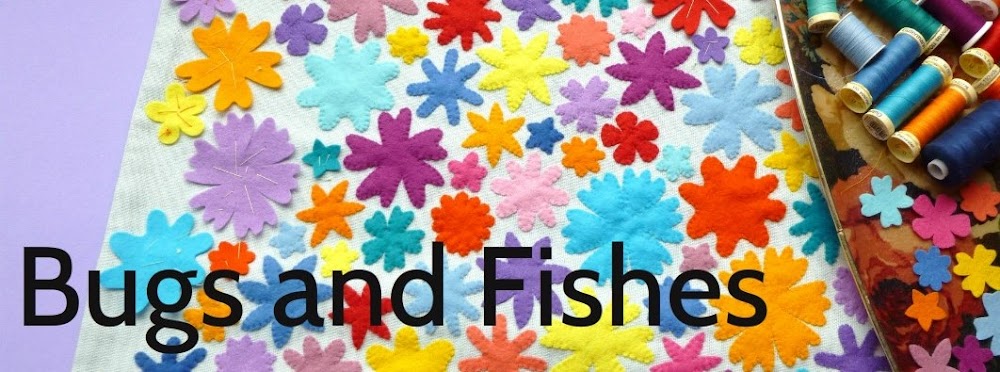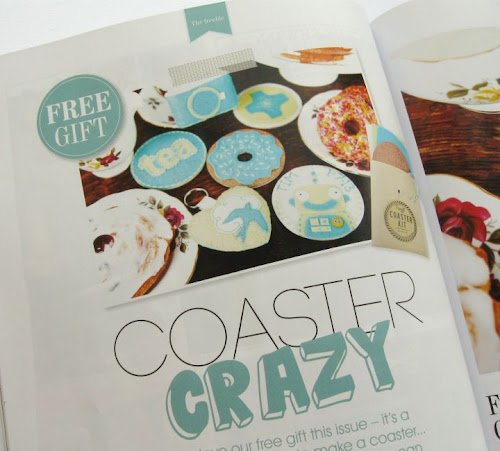So, you've decided what you're going to make for your tutorial and (if you need to) you've made a prototype to test out your design. Now it's time to start making!
Taking Notes.
As you make and photograph the project, it's important to take notes as you go along. It's very easy to forget exactly how you did a certain step when you come to write a tutorial, so taking detailed notes will help you write accurate instructions.
When I write my instructions I leave a space at the top of the page to write down all the materials and tools I'm using, and add each one to the list as I use them. Remember to include information like the size and colour of your materials - e.g. write "blue sewing thread" not just "thread", and if you're using a specific type of fabric or glue, or a particular size of bead, etc, then write that down too.
 | |
| Sewing Threads |
Then I write a quick list of the steps my project is going to involve, to help me plan out how many photos I'm going to take - e.g. for a bird brooch: 1. Cut out pieces, 2. Sew wings, 3. Sew eyes & beak, 3. Add stitching or sequins, 4. Add booch clasp, 5. Sew together.
Then as I make the project (pausing to take photos during or after each step) I write down everything I'm doing as numbered steps, in the order that I do it. If I notice that one step is getting quite long, I might take an extra photo and split it into two steps.
Think About The Details.
As you make the project, think about what you're doing during each step and how you would describe it to someone who can't see what you're doing. Your tutorial will have photos so you can say things like "sew the wings in position using running stitch" or "sew on the eyes with whip stitch in matching sewing thread" and people will be able to see where on the bird the wings and eyes need to be sewn... so the photos do a lot of the work for you. But thinking about how to describe something in words can really help you notice details that you should include in your instructions.
Example #1: when you sew a brooch clasp on the back of a felt brooch, writing "Turn over the back piece of the brooch. Use a double thickness of matching sewing thread to sew on the brooch clasp." makes for better instructions than just "Add the brooch clasp". You know you always turn over the backing piece and always use a double thickness of thread that matches your felt, but the person reading your instructions might not.
 |
| Adding a brooch clasp |
Example #2: when stuffing something (e.g. a felt owl) don't just write "Sew the owl together, stuff it then sew up the gap." What stitch have you used to sew it together, and what colour thread? What size gap have you left? What kind of stuffing are you using and did you use your fingers to stuff it or did you use a tool like a pencil? Did you stuff it lightly or firmly? (if you stuff it too much, will it distort the shape?) Did you have to take extra care to get the stuffing into the ears?
 |
| Sewing up a stuffed felt owl |
Also write down any tips or extra information that you'd like to include that people might find helpful. Are you using any special techniques that you need to describe or link to online tutorials for? Could people use a different material for this or did you choose this material for a special reason? Did you make a mistake (or nearly make a mistake) when doing the tutorial that you should warn people about? If you're using glue or paint, how long do you need to leave it to dry? If you're designing a project to make with kids, are there any tricky steps where the adult needs to take charge? Are one of these steps really messy, do people need to wear an apron or gloves? Etc etc.
Something to particularly look out for is: is there a step coming up later that affects what you're doing now? If so, make sure you mention this now and not later! People will follow your instructions step by step - they won't know there's something they need to bear in mind for later unless you tell them.
For example: if you've positioned your embroidered motif in the centre of your fabric because you need extra fabric around the edge for framing the design later.... or if you've stuck a shape onto a card slightly above centre because you need space to write "Happy Birthday!" underneath it later... or if you've taken care not to pull your stitches too tight when sewing something together because you need to flatten out the seam later... say so!
You don't always need to include lots of detail in your instructions (some steps - and some entire projects - will be very simple!) but thinking about the details of how you're making something will help you spot the steps that need a bit of extra info to help people replicate your project.
Next time: Photos and Illustrations

















































